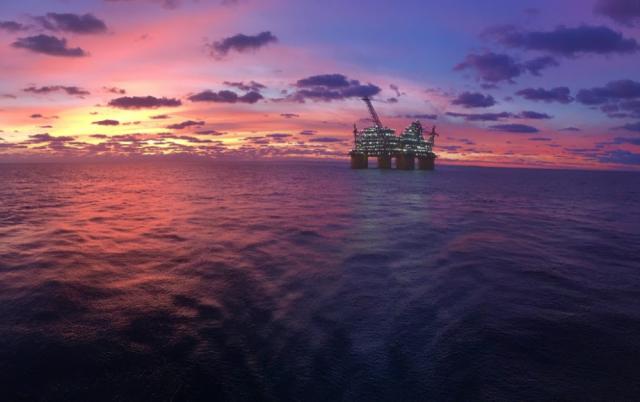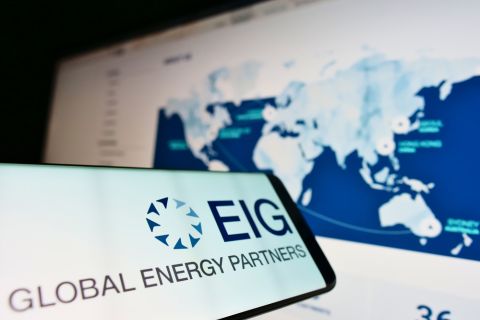
(Source: Shutterstock.com)
W&T Offshore Inc. has its eyes on acquisition opportunities as the Houston-based offshore player takes proactive steps to navigate the downturn, reducing costs and closely managing capital spending, according to the company’s top executive.
“Shareholders should expect to see more acquisitions in the future,” Tracy Krohn, chairman and CEO of W&T, told analysts on an earnings call June 23.
Within the past year, the company added to its shallow and deepwater acreage, focused in the U.S. Gulf of Mexico (GoM).
In 2019, W&T made a $200 million acquisition of Mobile Bay area assets offshore Alabama from Exxon Mobil Corp. Another deal with ConocoPhillips Co., worth more than $20 million, gave W&T a 75% working interest and operatorship of the Magnolia Field in Garden Banks blocks 783 and 784. The company acquired the remaining Magnolia interest in first-quarter 2020.
Asked by an analyst, who described adding working interest as seemingly the most economic of deals, whether W&T’s portfolio offered similar opportunities, Krohn said: “You can bet your ass on it.”
Uncertainty, however, lingers surrounding oil demand recovery following the global COVID-19 pandemic. Companies, both onshore and offshore, are still pressured by low—though improving—oil prices.
Like its peers, W&T has had to adjust.
Its steps have included suspending drilling activity, reducing capex to between $15 million and $25 million and lowering lease operating expenses by 15%-25%. Additionally, the company has temporarily shut in some lower margin operated and nonoperated oil-weighted properties, amounting to about 3,300 boe/d of production.
As market conditions have improved, some curtailed production has come back online.

“That should give you some encouragement,” Krohn said. However, some fields that were near the end of their life probably won’t come back online, he added, later noting the company has 18 months to do P&A work after freezing production on marginal fields.
For W&T, getting back to growth mode with the drillbit will take an oil price of about $50/bbl. WTI was up to about $40.20 just after 1 p.m. June 23.
The company produced about 4.9 MMboe (48% liquids) in first-quarter 2020, up 61% from a year earlier. However, realized sales prices were much lower than they were a year ago—$46.33 for oil at the end of March, compared to $58.66 a year earlier; and $1.91 per Mcf for gas compared to $3. NGL prices also dropped to $13.03, compared to $20.88.
W&T reported first-quarter 2020 adjusted net income of $5.8 million. Revenue was up by nearly 7% to about $124 million, compared to about $116 million, driven by lower prices.
The company generated adjusted EBITDA of $62.1 million, and cash flow from operating activities was $84.3 million. Some of its free cash flow was used by the company to repurchase outstanding senior second lien notes.
The steps have reduced the company’s annualized interest expense by more than $7 million.
“We believe that this was a very good use of free cash and will help place W&T on an even better financial footing moving forward,” he said.
The company’s moves drew praise from analysts.
“You certainly know the playbook during a downturn,” one said.
Another called W&T’s buying back a second lien “very opportunistic and a very good move.”
Similar sentiments were echoed by others, saying “well done.”
Krohn sees plenty of opportunity in the GoM.
“Most of the companies that have had problems are going to be eliminated or absorbed. The ones that don’t are going to continue to succeed,” he said.
The Mobil Bay acquisition shifted W&T’s production mix, increasing its natural gas volumes—something Krohn believes worked to its advantage given “natural gas has not been impacted by the same market forces as crude oil.” Hopes are to benefit from a higher gas price as associated gas production from oil wells fall.
“We expect to continue to find value in acquisitions, especially those that provide a solid foundation for our ability to generate free cash flow, even in the current pricing environment,” he said. “We’ve built W&T through the right combination of attractive property acquisitions, methodical integration and exploitation of those acquisitions, and successful development and exploratory drilling on our legacy fields.”
Though he acknowledged the current struggles of the industry, including for service companies, Krohn seemed optimistic about the long term.
“I think we’re adequately hedged at this point or close to it. So, I’m confident that we can withstand just about anything,” he said. “Of course, every time I say that, something else nasty happens. I guess I probably ought to stop saying that. But I think we’re pretty well protected at this point.”
Recommended Reading
EQT Sees Clear Path to $5B in Potential Divestments
2024-04-24 - EQT Corp. executives said that an April deal with Equinor has been a catalyst for talks with potential buyers.
Matador Hoards Dry Powder for Potential M&A, Adds Delaware Acreage
2024-04-24 - Delaware-focused E&P Matador Resources is growing oil production, expanding midstream capacity, keeping debt low and hunting for M&A opportunities.
TotalEnergies, Vanguard Renewables Form RNG JV in US
2024-04-24 - Total Energies and Vanguard Renewable’s equally owned joint venture initially aims to advance 10 RNG projects into construction during the next 12 months.
Ithaca Energy to Buy Eni's UK Assets in $938MM North Sea Deal
2024-04-23 - Eni, one of Italy's biggest energy companies, will transfer its U.K. business in exchange for 38.5% of Ithaca's share capital, while the existing Ithaca Energy shareholders will own the remaining 61.5% of the combined group.
EIG’s MidOcean Closes Purchase of 20% Stake in Peru LNG
2024-04-23 - MidOcean Energy’s deal for SK Earthon’s Peru LNG follows a March deal to purchase Tokyo Gas’ LNG interests in Australia.





